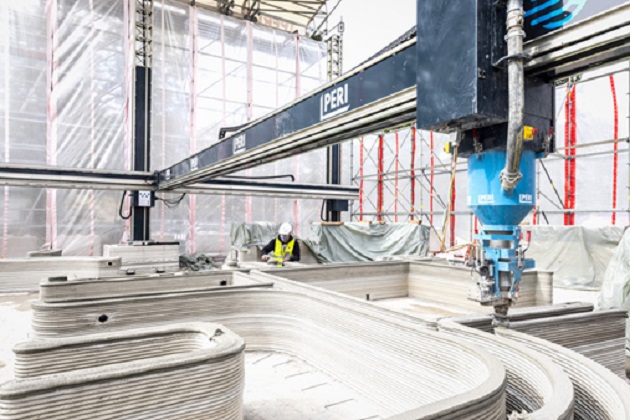What happened to 3D printing stocks?... This major upgrade breathes new life into 3D printing… “Smart materials” could unlock 4D printing… Plus, an easy way to profit from this megatrend…
- Is 3D printing dead?
A decade ago, “3D printing” was the hottest buzzword on the planet. Investors piled in… and 3D-printing stocks took off like a rocket.
3D Systems (DDD)—a leading 3D-printing company at the time—soared 1,000% between late 2011 and early 2014.
Stratasys (SSYS)—another poster child of the 3D-printing boom—jumped nearly 7X during the same period.
Back then, people thought 3D printing would democratize manufacturing… and that we'd all have 3D printers inside our homes.
That never came true. And when the industry failed to live up to expectations, the 3D-printing bubble popped…
3D Systems plummeted 93% between January 2014 and January 2016. Stratasys plunged 89% during the same period.
What if I told you 3D printing wasn’t a flop… the hype was simply a decade too early.
Today, 3D printing is disrupting industries left and right… giving investors a second chance to profit from companies fueling the boom.
- 3D printing has gotten a MAJOR upgrade…
If you’re not familiar with how this tech works, 3D printers allow you to “print” objects similarly to how an inkjet prints on paper.
Starting from scratch, a 3D printer builds objects layer by layer... stacking thin slices of materials (like plastics and metals) from the bottom up.
Early 3D-printing technologies worked great for things like modeling and prototyping. Industries from architecture to aerospace used these machines to quickly go from drawing board to prototype on the cheap.
|
[The #1 “Undercover” AI Opportunity] Despite all the recent hype, the biggest opportunity in AI has nothing to do with ChatGPT or Big Tech. Chris Wood shares why his #1 AI play is one secretly leveraging the technology to transform a $469 billion industry. |
For example, back in 2011, motorcycle maker Ducati cut 20 months (or 70%) off the development time of a new racing engine thanks to 3D-printing prototyping.
But these early models had their limitations…
Most early 3D printers were built to print with plastic. Great for prototypes... but you can’t make airplane wings, most car parts, or thousands of other “high-value” items with plastic.
Fast-forward to present day, and modern 3D-printing technologies have unlocked the use of metals and concrete.
Boeing (BA)—one of the two biggest plane makers in the world—now 3D prints thousands of titanium parts for its 787 Dreamliner. It’s shaved $3 million off the cost of each plane thanks to this technology.
Rolls-Royce (RYCEY)’s upcoming 3D-printed UltraFan jet engine will use 25% less fuel than its predecessor.
And just a couple of weeks ago, a 34-meter-tall rocket launched at Cape Canaveral, Florida. Eighty-five percent of the rocket was 3D-printed.
- “Super-sized” 3D printers can even create full-sized houses in a matter of days…
Here’s one stacking concrete:
 Source: ArchDaily
Source: ArchDaily
This is disrupting traditional construction in a huge way...
3D printing combines several trades into one, requiring fewer construction workers. It also saves time. With 3D printing, houses can be built in a day or two instead of taking weeks or months.
This cuts construction costs by around 50%.
These new 3D printers are also inspiring new designs. For example, it’s difficult and expensive to build curved walls with standard construction. With 3D printing, it’s a breeze.
- New kinds of materials could unlock 4D printing…
Have you heard of smart materials?
These special materials can bend, fold, expand, or change shape when exposed to different elements. You can “program” them to react to touch, light, temperature, electricity, different chemicals, and so on.
4D printing could use smart materials to bring daily objects “to life.”
For example, you could print a power cord that neatly folds into a tiny roll when unplugged and then loosens up again once electricity flows through it… a sun umbrella that perfectly tracks the sun’s direction… or even furniture that assembles itself.
4D printing also has the potential to revolutionize healthcare. Doctors could implant small medical devices that mold themselves into a desired shape when they reach a certain part of your body.
The possibilities are nearly limitless.
- Here’s how we’ll make money from this disruption…
Right now, 3D-printing stocks are on sale. And their businesses are doing great...
Autodesk (ADSK), for example, makes 3D design software. It’s a stock I recommended back in 2018—and it went on to gain 145%. In its latest quarterly result, the company reported a record $5 billion in sales.
And it’s not alone…
3D printing companies Desktop Metal (DM), Ansys (ANSS), and Nano Dimension (NNDM) also reported record sales in their latest earnings results.
A simple, one-click way to buy each of these companies—and other 3D-printing stocks—is through the 3D Printing ETF (PRNT).
PRNT currently trades 56% from its all-time highs, giving you a second chance to profit from “phase two” of the 3D-printing megatrend.
Stephen McBride
Chief Analyst, RiskHedge
In the mailbag…
We’ve received a flood of messages about our RiskHedge Report: “An important message to all parents.”
In it, Stephen discusses the impact social media and smartphones are having on young people today… and shares five practical ways to keep this “mind virus” from affecting your kids.
Here are a handful of the responses we got from your fellow readers:
You already had my respect, but you have gained much more over the last couple of weeks. Thanks for having the courage to speak out on social issues affecting kids. I think you are spot on, and I've shared a couple of your recent articles with my adult children. Keep up the good work. —Jeff
Guerton said:
This is a great essay, Stephen. And it is about the one thing that truly matters above all else, too—the well-being of our loved ones.
Thank you for your thoughts and sound advice. Agree with you 100%. I believe we should remove all cellular phones from all our children under 10. And all others above that age should be given a FLIP phone…
I still remember the look I got from my children about 15 years ago when I asked them to wait a few more years before receiving a personal cellphone. To them, that was virtually the equivalent of child abuse. Peer pressure is a powerful force.
Ultimately, I lost the battle. It's not easy. But I KNEW I was right then. And now the verdict is in. —Guerton
John wrote:
Thanks for that thoughtful piece. I am too old now to worry about my children, but I share your concerns for my grandchildren. I am fortunate enough to have had my children guided by a wonderful mother who managed to steer them clear of all that for the most part, and she and I are only on one social media site—Instagram. And for me, that is only to see my wife's latest posts as an artist.
I guess we are lucky enough to be such tech dinosaurs that we barely pay attention to our phones. I appreciate your points and will certainly inform my two daughters to impose these rules on their children once they get old enough.
As it sounds like the case with you, my family is far more important than all the money in the world. Thanks again for such considered commentary. —John
Dominic said:
Thank you for your recent email about the negative effects of mobile phones and social media on children…
Personally, I have seen significant mood/behavior changes in my 14-year-old daughter when she spends too long zoned out on her phone—mainly social media. Fortunately, she is intelligent, and we have been able to educate her about the negative side effects and addictive behavior, and she agreed to removing all social media apps from her own phone and installing them on my wife’s phone.
I do fear the impact this is having on their generation and wonder what sort of adults they will become as a result. As a parent, I feel very isolated in dealing with this problem—especially as other parents seem either too ignorant of the dangers or choose to bury their heads. —Dominic
Lastly, we heard from George:
Thanks very much for your parental message and suggested rules. My children are grown, but I have eight grandchildren whose welfare I am very concerned about in this social media era.
Your comments and suggestions are right on. And it’s refreshing to have somebody in the financial services industry take a serious look beyond that focus to a much more important issue.
Thanks again. We’ll see if people can look beyond their iPhones and social media to see what is happening to the vulnerable. —George



